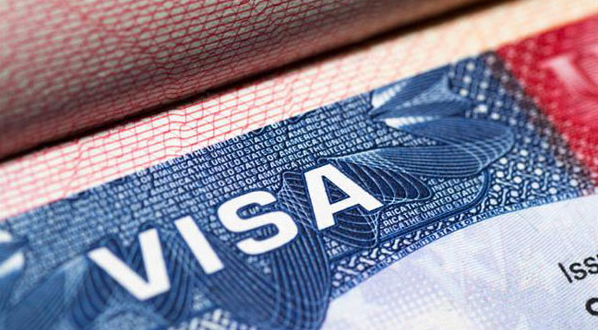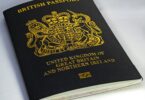In the simplest way, a visa is the document that allows one to enter the country as a foreign citizen that is travelling to a destination. It does not matter the purpose of the trip, you could be going there to visit a family member, as a tourist, as a diplomat, as a student or as a professional.
Nowadays, there are multitude countries that allow the process of applying for the visa online. This makes the whole process much easier and quicker. Nevertheless, some countries still make of the consulates and embassies the place where some visas must be applied for.
You should find out about a country’s entry laws before travelling, given that each country has specific immigration and visa requirements, which may vary depending on the nationality of the applicant, visa types and country circumstances can change.
Why do you need a travel?
The travel visa is the document that will legally allow you to enter a foreign country for a specific period of time. With this required document, the government is able to check and take into account the people that enter and leave its country.
On a general note, there are 2 types of visas: the short-stay visas and long-stay visas. Short-stay visas are typically requested for tourist, business and/or transit purposes, and they allow you to stay in a country for up to 90 days. The long-stay visas are for those who wish to reside, work or study in a different country and are planning to stay for longer than 90 days
What are the most common types of visas?
There are a lot of visas and subtypes of visas. Nevertheless, the four main types are the travel visa, the business visa, the student visa and the work visa.
Some of the common visa types by purpose of travel include:
- Tourist visas. Tourist visas are entry permits issued for recreational purposes. Tourist types of visas are short-term, usually valid for three months, and you cannot work while on a tourist visa. There is usually no limit to how many times you can apply for a tourist visa for the same country— as long as the embassy/consulate grants the visa; you can freely travel.
- Transit visas. A transit visa allows you to pass through a specific country while traveling to a third destination country. For example, if you have an Indian passport and you are travelling to Canada, but during your trip you have a layover in a Schengen country, you will need a Schengen transit visa. Usually, this type of visa is issued for 24 up to 96 hours, but it can also be issued for ten days up to two weeks—depending on which country you transit through. You have to apply for a transit visa before traveling; transit visas are not issued at the airport.
- Medical visa. You can apply for a medical visa to seek medical treatment in a foreign country. Medical visas are short-term issued for the duration of the medical procedure and the patient’s recovery time. To qualify for this type of visa, you need to provide evidence from your doctor regarding your condition and proof that you have found a hospital and a doctor in your destination country who will perform the required procedure.
- Working holiday visas. Working holiday visas are short-term permits that can be considered a mix of the tourist and work visas. The purpose of this visa is to allow you to explore a foreign country like on a holiday while working to support your trip financially. Most countries have restrictions on what type of work you can do and how many hours you can work. Generally speaking, working holiday visas are issued for a year or two, and you can only apply for the visa once (except Australia’s working holiday visa). To be eligible for a work and holiday visa, in most cases, you must be between the ages of 18-30.
- Student visas. Student visas are issued for educational purposes and are usually valid for the duration of your study program. As a result, your study visa can last between one to four years, or even more, depending on your course. You cannot work in another country with a student visa unless your host country permits you.
- Work visas. If you find work in a foreign country, you must apply for a work visa. Work visas are usually issued for long-term purposes from one up to four years, but this changes depending on your work contract. Your working visa serves as a route to a permanent residence permit in most cases.
- Family reunification visas. A visa for family reunification is issued when your spouse lives and works in another country. This visa allows you to become a temporary (or permanent) resident in the country where your partner is working. Usually, a family visa is also issued to any minor children you or your spouse have.
- Investment visas. An investment visa allows you to become resident in another country if you make a significant financial investment. The required investment varies (in a startup, bonds, a government fund, etc.) but the result must be the same: a positive financial impact and/or employment opportunities. In some countries, you may also acquire a visa if you purchase real estate property.
- Official visas. Official visas allow you to do diplomatic work as a representative of your country abroad. Some of the most commonly issued official permits are diplomatic visas, but some countries also provide service and courtesy visas.
- Pilgrimage visas. Pilgrimage visas are issued to people who want to complete a religious journey in another country. An example of a pilgrimage visa is the Hajj visa issued by Saudi Arabia to Muslims who want to complete the sacred journey of Hajj in Mecca. These types of visas are usually issued for a group of people rather than an individual and are valid only for the time it takes to complete the pilgrimage.
How to apply for a Travel Visa
Most commonly, you apply for a visa through one of the following ways:
- At an embassy or consulate of the country that you will visit.
- Online (electronic visa).
- At the point of entry (visa on arrival).
Visa Application at an Embassy
In most cases, you can apply for a visa at the embassy or consulate of the country you want to visit. You will have to:
- Make an appointment.
- Collect a set of documents.
- Pay a visa processing fee.
- Enter a visa interview (sometimes).
The consular officers will review your application and decide whether to grant you a visa or not. Depending on the visa type, it could take several days to several months to process your application.
Online Visa Application
You can also apply for a visa online. Electronic (online) visas are usually issued as printable documents and are not pasted onto your passport. If a country issues electronic visas, then there will be an official application website, where you can:
- Visit the Home page
- Locate & click on the appropriate application form to start the process
- Fill the Application form; check the ‘ I ACCEPT FULL RESPONSIBILITY FOR THE INFORMATION PROVIDED IN THIS FORM ‘ check box.
- Attach electronic copies of your documents.
- Click on ‘Submit Application’ button to view ‘Applicant details page’
- Click on “Proceed to Online Payment”
- Click to select Payment Currency “Pay in Dollars” option then Click on ‘Continue’ button
Visa on Arrival
You can apply for a visa at the airport or other point of entry of the country you are traveling to. This is known as a visa on arrival (VOA). In these cases, there will be visa counters at the point of entry, where you have to apply, pay a fee, and then wait for the decision to be made before you can pass through. Depending on the country, it could take from a few minutes to a few hours
Travel Visa Requirements
- Passport valid for at least 6 months
- Completed visa application form
- Two recent passport size photographs
- A Letter of Invitation from a company/host country
- Visitors/Tourists are required to show evidence of sufficient funds
- Visa Payment Receipt and Visa Acknowledgement Receipt
FAQs
What is the Difference Between a Passport and a Visa?
While they are both travel documents, the main difference between a passport and a visa is that a passport is issued from your home country, whereas a visa is issued by the country you want to visit. Other differences include:
- The passport is an identification travel document, whereas a visa is attached to your passport, showing you have permission to enter a specific country.
- A passport is issued for about ten years, whereas a visa’s duration is shorter, usually a few months.
What Is the Difference Between a Visa and a Residence Permit?
The terms visa and a residence permit are often used interchangeably. However, a notable difference between the two is:
- You need a visa to travel to and enter a foreign country, either for tourism, business, work, studies, etc., usually for a short period.
- You need a residence permit to settle in a foreign country for an extended period.
Sometimes, you receive a visa first and then convert it into a residence permit once you enter your destination country. Other times, you automatically get a residence permit as soon as you apply for a long-stay visa (work, study, family reunion, etc.)
ALSO SEE: I Want to Travel Abroad But No Money







